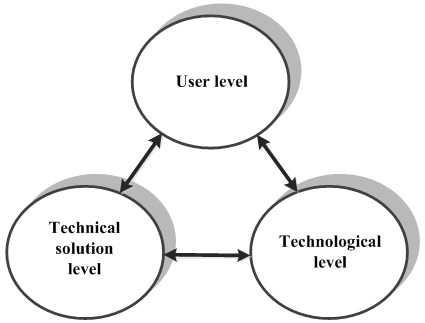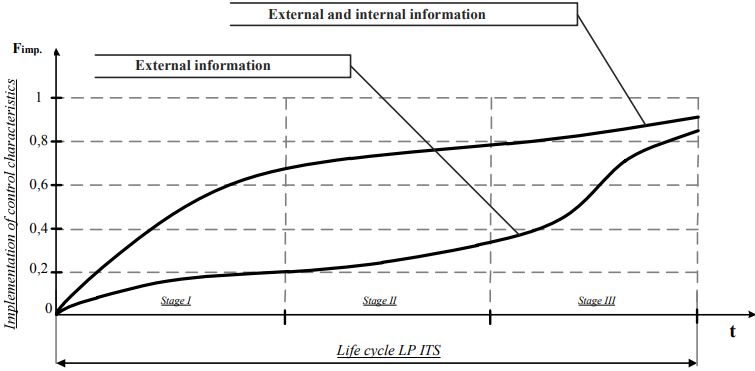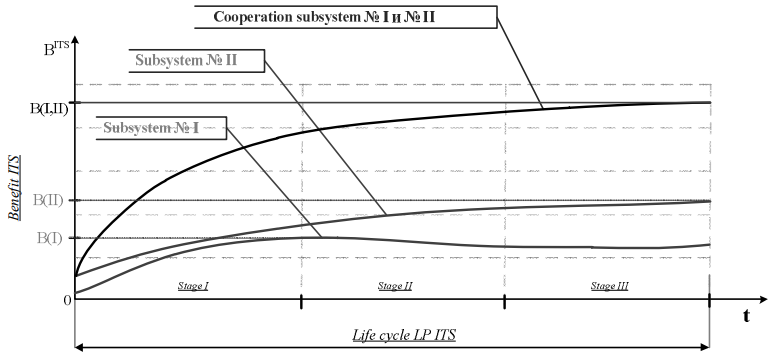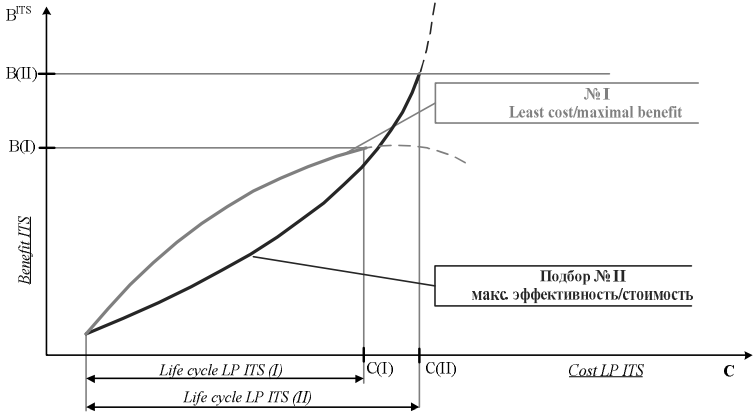DESIGN INTELLIGENT TRANSPORT SYSTEMS
Халилев Р.Ф.
Аспирант, Московский автомобильно – дорожный государственный технический университет (МАДИ).
ПРОЕКТИРОВАНИЕ ИНТЕЛЛЕКТУАЛЬНЫХ ТРАНСПОРТНЫХ СИСТЕМ
Аннотация
В данной статье рассмотрены основные направления и задачи при проектировании интеллектуальных транспортных систем. Рассмотрены условия разработки локальных проектов интеллектуальных транспортных систем, на стадии обоснования, внедрения и модернизации.
Ключевые слова: жизненный цикл (ЖЦ), интеллектуальные транспортные системы (ИТС), локальный проект (ЛП), техническое решение (ТР).
Khalilev R.F.
PhD student, Moscow State Road Automobile University
DESIGN INTELLIGENT TRANSPORT SYSTEMS
Abstract
The given article contains the main objectives and approaches when designing ITS. Also it principles development local projects ITS, at the stage substantiation, implementation and upgrade systems.
Key words: life cycle (LC), intelligent transport systems (ITS), local project (LP), technical solution (TS).
Introduction
At the initial stage of development and formation of local ITS projects, the most important effective building system during the life cycle is the true estimate analysis of capital and exploitation costs.
The most spread method of decision-making by the customer on the stage development LP ITS, based on the choice of the most efficient project with the lowest cost.
Considering the experience of the implementation and exploitation of ITS projects in a rapidly progressing technological environment area, the adoption of solutions by the customer ,based on experience and typical technical solutions, initially creates an outdated and less efficient system, and then this system is not adopted to the modernization and development.
The customer has to select the oprtimal local project ITS, taking into consideration the most efficiency, prediction of modification, influence of the system on service market.
At the initial stage of development and formation of local ITS projects, the most important effective building system during the life cycle is the true estimate analysis of capital and exploitation costs. The most spread method of decision-making by the customer on the stage development LP ITS, based on the choice of the most efficient project with the lowest cost.
Considering the experience of the implementation and exploitation of ITS projects in a rapidly progressing technological environment area, the adoption of solutions by the customer ,based on experience and typical technical solutions, initially creates an outdated and less efficient system, and then this system is not adopted to the modernization and development.
The customer has to select the optimal local project ITS, taking into consideration the most efficiency, prediction of modification, influence of the system on service market.
The creation of indicators efficiency matrix , functional physical architecture LP ITS, should be inextricably linked. The indicators efficiency matrix creates conditions and requirement to the functional architecture. The development of functional architecture includes control mode (standard, situational and operational); the conditions of cooperation with the external informational systems, zone of influence and requirements for the physical architecture.
Development of physical architecture LP ITS requires the high level of knowledge in the area of information and telecommunication technologies. The users of ITS make the requirements to the technological base of LP and are the direct subject receiving and implementation of control characteristics.
The structure of estimate efficiency ITS include three levels (Drawing 1):
- User level – the estimate of realizing of control characteristics;
- Technological level – methods and modes of receiving , elaboration of dates and cooperation subsystems ITS;
- Technical Solutions level – data collection , processing and control characteristics mapping;

Drawing 1 – Cooperation structure
The relevant cooperation of these levels make the true efficiency estimate LP ITS.
On the basis of the material given above were made the next experimental researches:
- cooperation users level and technical solution level;
- Users level and technological level;
- Technological level and technical solution level.
Consequently, we have the sequent results:
- Implementation level of sequent parameters during life cycle period have a dynamic character of changing and depends on conditions and information quality ITS users. It was revealed the dependence of growth/descent level of executed parameters from ITS area knowledge zone. Knowledge, conditions of work system, ability to use received information, quality of information etc. There were highlighted the most important parameters, that exist during the life cycle LP ITS-training and confidence (Drawing 2).

Drawing 2 – Estimate efficiency LP ITS
- The appropriate doubling and additional informing allows to raise the control characteristics level from 10 % to 20% , that considerably improve the efficiency of the system in whole. The implementation of doubling systems and additional informing requires the conducting of special researches that determine distraction during the usage of internal technical solution in a car to avoid the decrease of the transportation security level.
- Considering the level of subsystems combination , were highlighted the main conditions of cooperation subsystems - “synergy” effect. Cooperation of the relevant subsystems in the terms of one and more goals is the most efficient solution during the situational and operating control. At the uncoordinated operation is not regard the cooperation is possible the negative mutual influence (Drawing 3).

Drawing 3 – Estimate efficiency cooperation subsystems LP ITS
- The realization of choosing the most effective ITS project is necessary to make with the help of recommendations and conditions given above. A comparison of two or more subsystems subject to a further increase / decrease of efficiency ITS during the life cycle, combining technical solutions in a single / multi-goals allows you to display to select the most favorable conditions of the draft ITS on stage study (Drawing 4).

Drawing 4 – Benefit/cost analysis LP ITS
Conclusion
The acceptance of the appropriate solution by the customer on the stage of .implementation LP ITS permit to adopt the most profitable system costs benefits during the LC. Design ITS taking into consideration the regarded conditions in this article permit the customer to make the right financial and technical policy and build a system that will work for a long period of time.
References
Жанказиев С.В., Тур А.А., Халилев Р.Ф. Интеллектуальные дороги – современный взгляд // Наука и техника в дорожной отрасли. – 2010. – № 2. – С. 1 – 7.
Жанказиев С.В., Халилев Р.Ф. Становление жизненного цикла локального проекта интеллектуальной транспортной системы // Отраслевой ежемесячный научно-производственный журнал для работников автотранспорта Автотранспортное предприятие. – 2012. – № 11.
Жанказиев С.В., Халилев Р.Ф. Принципы формирования архитектуры локального проекта интеллектуальной транспортной системы // В мире научных открытий. – 2012. – №12. С.105 – 111.
Халилев Р.Ф. Новые подходы к оценке эффективности технических решений ИТС // Научно – практический журнал Актуальные вопросы инновационной экономики. – 2013. – № 4. С. 176-179.
